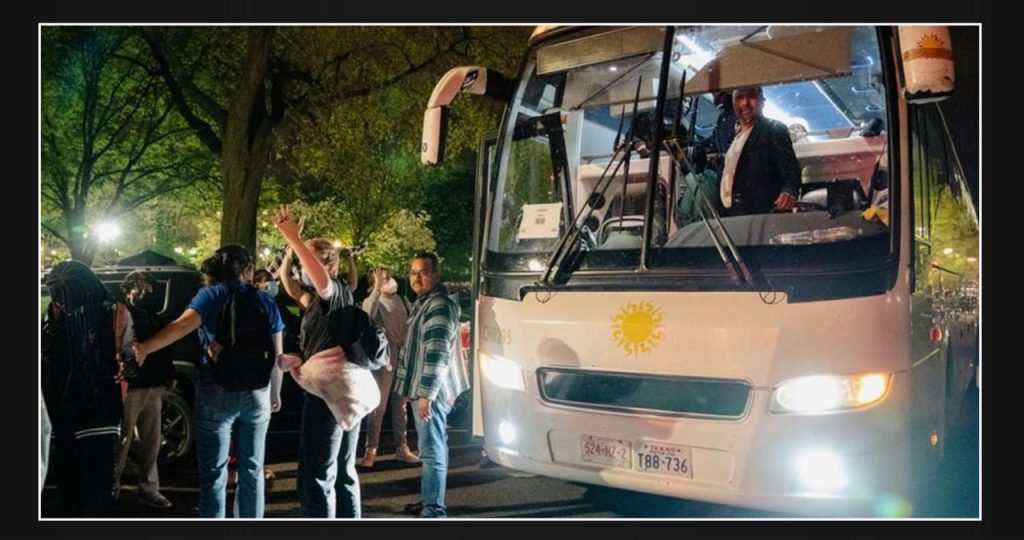In an ambitious initiative launched nearly two years ago, Texas has spent over $148 million to transport more than 102,000 migrants from the state’s southern border to various cities across the United States. Since April 2022, this controversial program has sparked debate on immigration policy, resource allocation, and state versus federal responsibility.
Governor Greg Abbott introduced the migrant busing program in response to increasing border crossings and the expiration of Title 42, a pandemic-era order that allowed authorities to turn migrants away at the border. Texas has since bussed migrants to cities such as New York, Chicago, Denver, Philadelphia, Los Angeles, and Washington, D.C. The project, part of Abbott’s Operation Lone Star border security strategy, is framed by his administration as a necessary step to address what Abbott calls the “burdens” of federal immigration policies.
Financial and Social Costs of the Busing Program
This Article Includes
With an annual budget of $321 billion, Texas’s expenditure on the program may appear minimal in comparison, amounting to less than half a percent of the budget. However, the project’s $148 million cost still raises concerns. Economic expert Ray Perryman, president of The Perryman Group, questions the necessity of using taxpayer dollars for the program, pointing to the opportunity cost of such significant spending.
Despite these costs, the program has its defenders. Texas Representative David Spiller, who authored legislation to enhance local enforcement of immigration laws, has praised the initiative as an effective way to illustrate the challenges of life at the southern border to other regions of the country. Spiller argues that the program, despite criticism, highlights the impact of border crossings on Texas communities, encouraging other states to share the responsibility.
Migrants’ Experiences and the Shifting Dynamics of the Program
The program has had mixed impacts on migrants themselves. For some, the bus rides offered a pathway to new opportunities and stability in the United States. J., a 34-year-old Venezuelan migrant, traveled from Texas to Washington, D.C., where he eventually resettled and began building a new life. In his journey to the U.S., J. traversed the treacherous Darién Gap and crossed the Rio Grande before receiving Texas’s offer of a free bus ride. Today, he lives in Maryland, learning English, participating in culinary training, and embracing opportunities he never had back home.
At the outset, the Val Verde Border Humanitarian Coalition in Del Rio, Texas, supported the initiative, viewing it as a safe and affordable way for migrants to reach major cities where they could access more resources. However, as operational changes took effect, such as unexpected drop-off times and limited advance communication, the coalition ended its partnership, citing concerns for migrant safety.
A Growing Trend in U.S. States
Texas’s approach has inspired other states to adopt similar strategies. Florida and Arizona, under governors of both major political parties, have launched their own busing programs. Yet, this practice has created new challenges in receiving states. In Illinois, Governor J.B. Pritzker recently urged Abbott to halt bus arrivals during a severe winter storm, highlighting a lack of available shelters. Colorado Governor Jared Polis has requested federal support for states grappling with the influx of migrants, emphasizing the need for coordinated assistance.
A Complex Legacy
Governor Abbott’s administration plans to continue transporting migrants, arguing that it is Texas’s right to protect its communities from federal policies they believe to be inadequate. For many migrants like J., the program has offered a new beginning, and he remains grateful for the opportunity to rebuild his life. “When I look back, I’m no longer the same person,” J. reflects.
The future of the program remains uncertain, with critics and supporters alike closely watching its evolution. Whether or not it continues, Texas’s migrant busing initiative has undoubtedly made a lasting mark on the national conversation about immigration and state responsibility.
